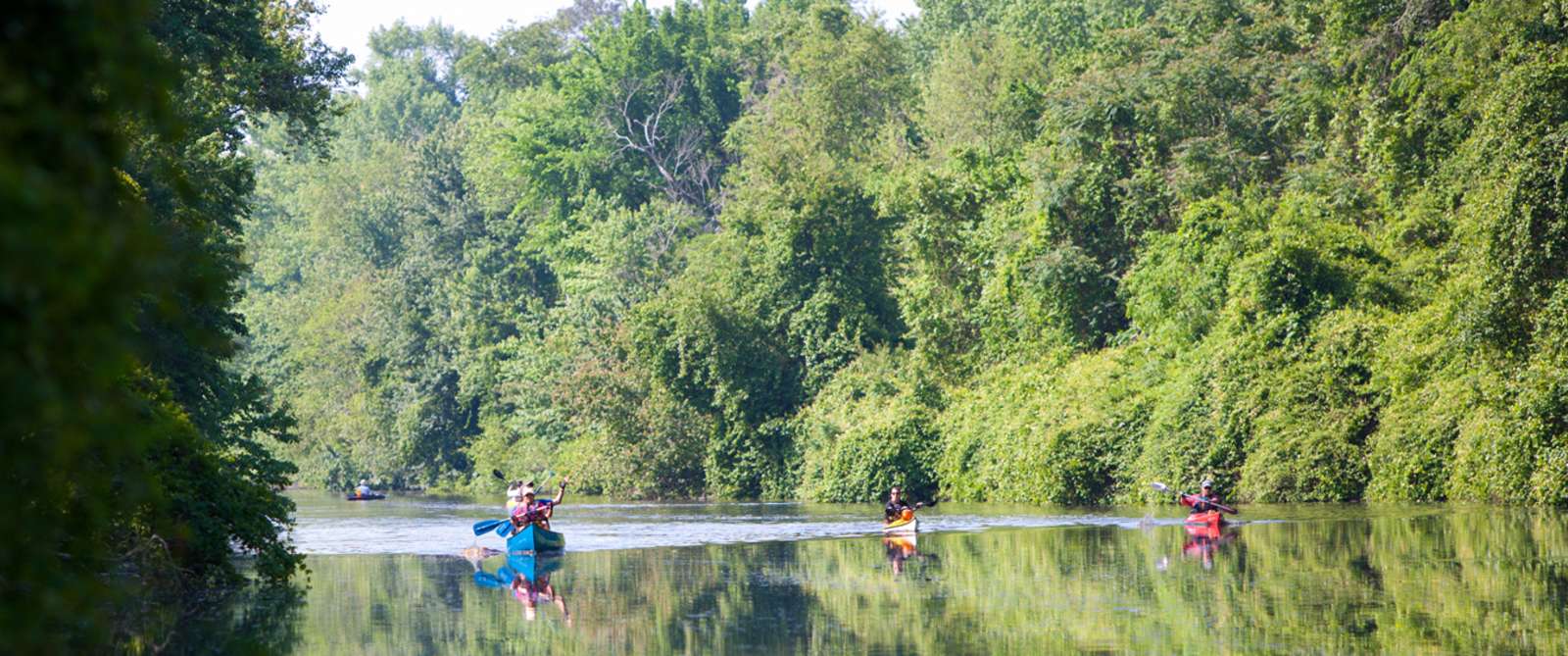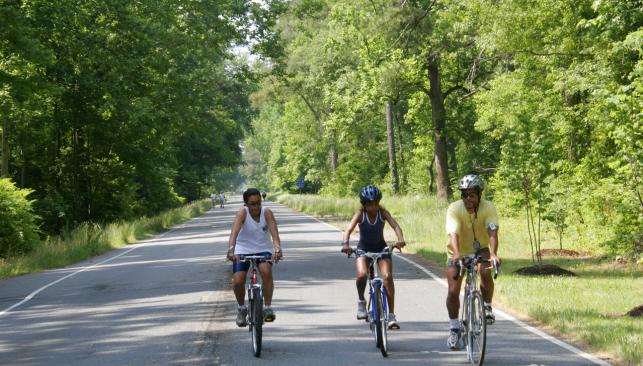Dismal Swamp Canal, Chesapeake
Despite its given name, there’s nothing dismal about this swampland canal today ... unless you believe in spooky ghost stories. The Dismal Swamp Canal was made by man two centuries ago, but nature is ever-present. Past the beautiful Atlantic white cypress trees, you may spot a white-tailed deer as you kayak or sail down the historic canal. Look up, and you might also witness a colorful migration of birds flying overhead.
A segment of the Atlantic Intracoastal Waterway, the Dismal Swamp Canal, which is fed by Lake Drummond, flows for 22 miles between Virginia and North Carolina. It cuts through the Great Dismal Swamp National Wildlife Refuge.
At first glance, the canal appears to be an ordinary body of water found in a picturesque setting. But so much more lies underneath its surface.
The Canal’s History
Before spending a day out on the Dismal Swamp Canal, there’s a lot of history in these waters you’d be curious to know.
Before there was a canal, there was swampland. It was Colonel William Byrd II who envisioned something more during the late 1720s. But it would take years for the idea to blossom into action as construction on the man-made waterway wouldn’t begin until the 1790s.
The goal was to create a viable trade route between the Chesapeake Bay and North Carolina’s Albemarle Sound. It was the first canal that connected the two regions, then came the Albemarle and Chesapeake Canal decades later. Now, the Dismal Swamp Canal is part of something bigger — the Intracoastal Waterway — a network of aquatic passageways along the Atlantic Ocean and Gulf of Mexico coasts.
The Dismal Swamp Canal is the oldest operating waterway in the country. Both the canal and swamp played a huge role in African-American history. Between 1680 and the Civil War-era, the swamp served as a refuge not just for wildlife but for hundreds, if not thousands, of escaped slaves, who lived off the land freely.
Given its history, it’s no surprise the canal and swamp inspired several ghost stories, including one about a colonial-era husband and wife, who were alive during the canal’s construction, and are seen from time to time wandering the swampland.
Dismal Swamp Canal vs. Great Dismal Swamp Refuge
The canal flows through the Great Dismal Swamp National Wildlife Refuge. Like the canal, the wildlife refuge spills into both Virginia and North Carolina, except it’s way larger, encompassing more than 100,000 acres of forested wetlands. The refuge features Lake Drummond, which feeds the canal, as well as over 6,000 acres of marshland, nearly 50 species of mammals, including black bears and bobcats, and hiking and biking trails.
The canal, a federal waterway, is 22-miles long, six feet in depth, and can accommodate watercraft as large as 50 feet wide and 300 feet long. On the canal, you can enjoy activities like fishing, boating, canoeing, and kayaking.
You can also enjoy the beauty of the Dismal Swamp Canal by land via the Dismal Swamp Canal Trail.
Explore over 8 miles of this beautiful trail. Designed to be multi-use, the Dismal Swamp Canal Trail is perfect for individuals of all abilities. Just alongside the Dismal Swamp Canal, this trail borders both the Great Dismal Swamp National Wildlife Refuge and the Cavalier Wildlife Management area - Dismal Swamp Tract, providing the opportunity to see the best of Chesapeake's wildlife. From birds to butterflies, dragonflies, bears, bobcats, and otters, there is an abundance of critters to behold. Be sure to also keep an eye out for the incredible reptiles and amphibians that call the swamp their home. For more information on the Dismal Swamp Canal, find details here.




